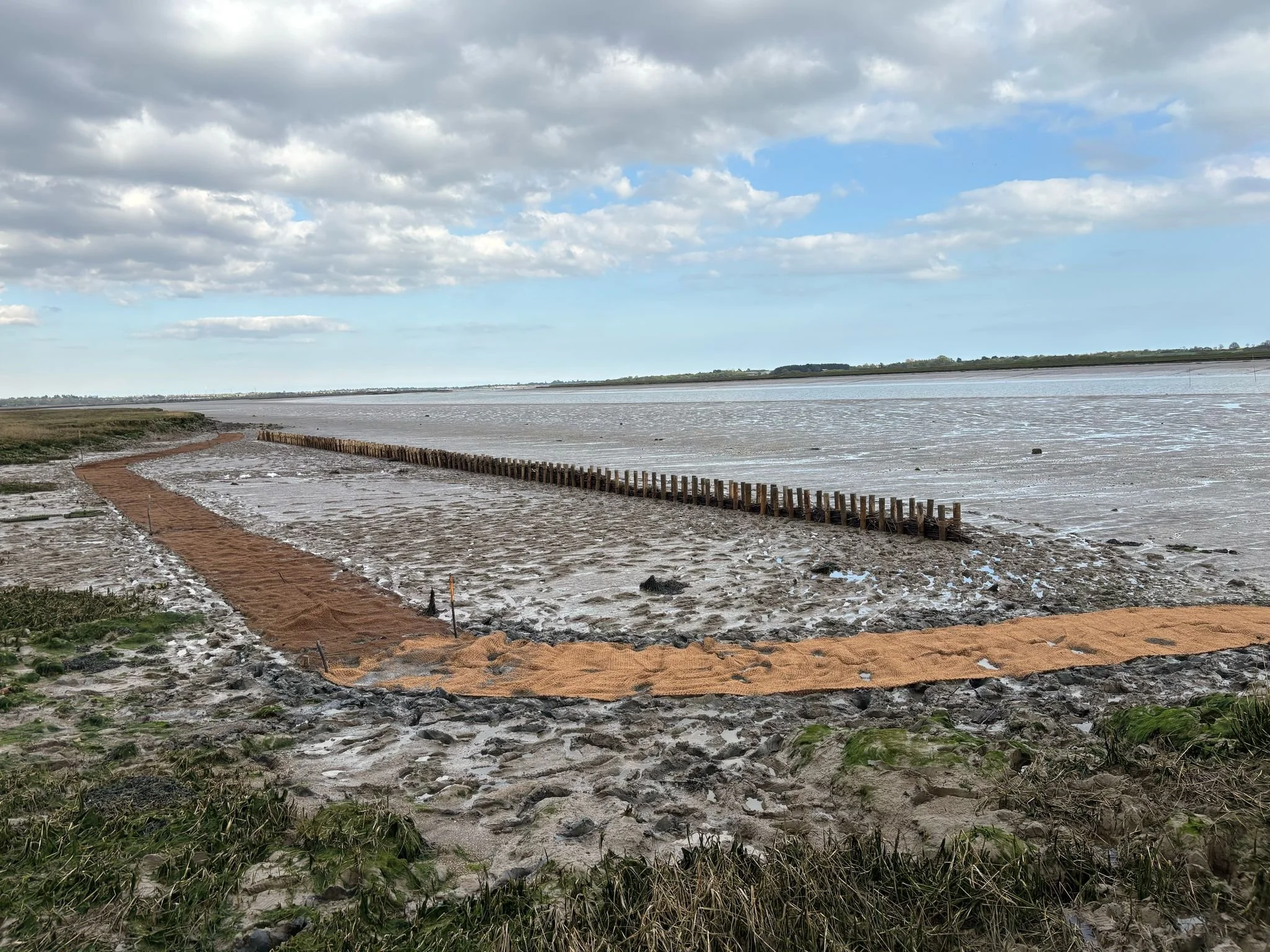Fingringhoe Brushwood Installation
Saltmarshes are a key habitat within the UK. Formed when sediment builds up in the sheltered areas of estuaries and coastlines, these marshes are home to a huge range of wildlife.
This includes 40 species of plant, 290 types of invertebrates and 80 different wetland birds, with curlew, lapwings and redshanks being notable examples.
Furthermore, saltmarshes capture carbon 40 times quicker than forests, thanks to the rapid growth of plant species and their subsequent burial underneath layers of sediment. They also act as excellent natural sea defences by absorbing tidal energy and trapping rising water in pools and channels.
However, their existence has been seriously threatened over the past few centuries. Since the 1860s, it is estimated that 85% of England’s saltmarshes have been lost. This is due to an increasing demand for more farmland leading to the ‘reclamation’ of saltmarshes, erosion from more frequent and more powerful storms fuelled by climate change, and the construction of seawalls too close to coastlines, which stop the natural saltmarsh formation process.
One such place threatened with the increased risk of flooding due to the erosion of its saltmarshes is Fingringhoe Ranges in Essex.
Owned by the Ministry of Defence and managed by Landmarc, the ranges are located on a peninsula nestled between the Colne Estuary and Mersea Island.
To remedy this increasing flood risk, Landmarc contacted Exo Environmental to devise a plan to regenerate this vital habitat.
Following successful material trials on-site in the spring of 2024, the methodology began to take shape.
We settled on a combination of brushwood fencing and coir matting, both of which are materials we have previously deployed in other successful coastal regeneration projects.
These materials work in tandem to encourage sediment deposits, with the brushwood reducing the tidal energy of incoming waves and the coir providing an excellent substrate to trap the silt and sand
The advantage of both materials is that they are both natural and will biodegrade after they become submerged beneath the regenerating saltmarsh.
The full-scale installation of brushwood fencing and coir matting began just after the Easter Weekend this year.
Two members of the Exo team arrived a day early to oversee delivery of the materials and to map out the installation sites with a GPS.
A full team of 6 then carried out the project over the next 4 days, working around the rising and falling tides and battling through some particularly treacherous mud!
Now that the installation is complete, Exo will continue to monitor the site over the coming years, assessing the structural integrity of the fencing and surveying changes in the sediment and vegetation to evaluate the success of the project.
If you would like to find out more about the habitat restoration services we offer, please get in touch.



